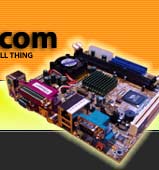|  | September 05, 2017
Choosing the right DC-DC PSU August 27, 2015
AMD's Project Quantum August 13, 2015
The Redstone PC is the ultimate Mini-ITX Minecraft Machine October 09, 2014
The "Restomod TV" April 09, 2013
Installing NAS4Free February 28, 2013
Building an XBMC 12 Home Theatre PC January 25, 2011
XBMC Guide updated to version 10.0 August 06, 2010
Building a Green PC February 15, 2010
Building an ION powered HTPC with XBMC October 10, 2008
The "Cambridge Autonomous Underwater Vehicle 2008" |
|  | | | September 12, 2008
"Florian", the DVD burning robot September 05, 2008
The "i-EPIA" May 22, 2008
The "GTA-PC" April 14, 2007
The "Digg" Case January 19, 2007
The "ITX-Laptop" December 07, 2006
The "Tortoise Beetle" October 02, 2006
The "DOS Head Unit" August 31, 2006
The "Janus Project" August 05, 2006
The "Leela PC" June 26, 2006
Nano-ITX in a Football May 17, 2006
The "EPIA Alloy Mod" April 11, 2006
Neatorama's Collection of Case Mods February 18, 2006
The "Rundfunker" October 24, 2005
The "ITX TV" October 06, 2005
The K'nex-ITX August 05, 2005
The "Waffle Iron PC" July 21, 2005
The "Supra-Server" July 18, 2005
The "Mega-ITX" July 07, 2005
The "Encyclomedia" May 25, 2005
The "Accordion ITX" |
|  | | | May 16, 2005
The "FileServerRouterSwitch" May 15, 2005
The "Mini Falcon" May 13, 2005
The "Bender PC" May 11, 2005
The "BBC ITX B" May 10, 2005
The "Frame" April 20, 2005
The "Jeannie" March 09, 2005
The "Cool Cube" January 30, 2005
First Nano-ITX Project? January 17, 2005
The "iGrill" January 15, 2005
The "Gumball PC" December 15, 2004
The "Deco Box" December 03, 2004
The "TERA-ITX" October 06, 2004
The "Coealacanth-PC" September 17, 2004
The "Gramaphone-ITX-HD" August 26, 2004
The "C1541 Disk Drive ITX" August 25, 2004
The "SEGA-ITX" August 13, 2004
The "Quiet Cubid" August 06, 2004
The "BMWPC" July 14, 2004
The "Moo Cow Moo" July 02, 2004
The "Mini Mesh Box" Full alphabetical archive on right hand side of page... |
|
|
Inside the Hush Silent Mini-ITX PC
Posted on April 22, 2003
Introduction
Launched a month ago at CeBIT 2003, the Hush
Technologies Mini-ITX PC has generated huge amounts of interest
in the press and online media. This is not surprising, as
it offers the first pre-built silent Mini-ITX solution in
a sleek high quality enclosure. Even though we are the major
online retailer of the Hush,
we will try to review the system objectively and fairly and
answer some of the most common questions people have asked
about it.
Specifications
The Hush Mini-ITX PC is currently available
with a Black or Silver case, with a VIA
EPIA M9000 motherboard powering it. Of course, we had
to be different - and chose the Gold pre-production sample
to test. We don't know if this colour will be available as
an option in future.
The full currently available options are:
• Black or Silver Hush Mini-ITX PC Enclosure
(aluminium)
• VIA EPIA Mini-ITX Form Factor motherboard (EPIA M9000)
• 933Mhz VIA C3 CPU, VIA CLE266 Chipset
• Passive cooling solution utilising heatsink linked
to finned chassis
• 128MB PC2100 DDR RAM (configurable up to 512MB)
• 40Gb Seagate Barracuda Hard Drive (configurable up
to 120Gb)
• TEAC Slimline CD (or TEAC Slimline DVD/CDRW Drive)
• 6-Channel Audio and SP/DIF
• VGA and TV-Out (RCA and S-Video)
• 10/100 Base-T Ethernet Port
• 4 x USB 2.0 Ports
• 2 x IEEE 1394 Firewire Ports
• Serial, Parallel, Mouse, Keyboard Ports
• 32MB Integrated VIA "Castlerock" Graphics
with MPEG2 Decoder
• Full-length PCI Slot for PCI Expansion
• External Universal 110V - 240V Power Supply
• Supplied without Operating System (or with Windows
XP Pre-installed)
• Case dimensions: 370mm x 340mm x 59mm (W X D x H)
The new Nehemiah M10000 motherboard will of
course be available as an option, when it becomes available
in quantity to Hush Technologies.
The Hush Mini-ITX PC
We received our Hush packaged in a large cardboard
box cushioned between two strong plastic "pillows",
with the power supply, driver CD and instructions carefully
wrapped to the right of the case.
The Hush enclosure is a minimalist design
and of very high build quality - it looks more like an upmarket
Hi-Fi seperate than a PC case. It's also extremely heavy!
The secret of this case is the huge bank of
fins down each side. Forget heatsinks inside the case - the
case IS the heatsink. Everything inside the case is designed
to channel heat towards these fins, and of course the low
heat characteristics of Mini-ITX motherboards make them ideal
for this purpose.
The rear of the case,
showing the I/O panel of the Mini-ITX motherboard, USB and
Firewire connectors, and blanking plate for an additional
PCI card.
|
|







